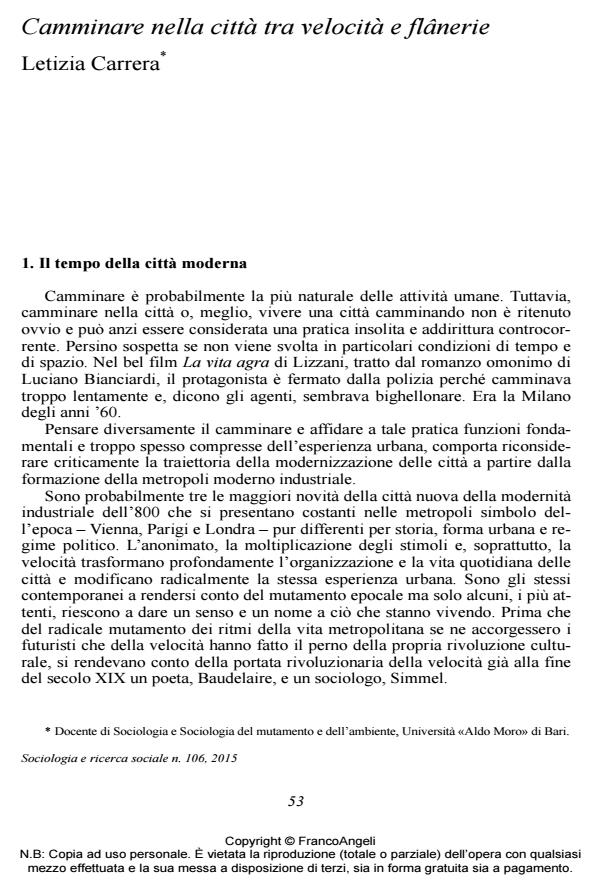Walking in the City between Speed and Flanerie
Journal title SOCIOLOGIA E RICERCA SOCIALE
Author/s Letizia Carrera
Publishing Year 2015 Issue 2015/106
Language Italian Pages 17 P. 53-69 File size 110 KB
DOI 10.3280/SR2015-106003
DOI is like a bar code for intellectual property: to have more infomation
click here
Below, you can see the article first page
If you want to buy this article in PDF format, you can do it, following the instructions to buy download credits

FrancoAngeli is member of Publishers International Linking Association, Inc (PILA), a not-for-profit association which run the CrossRef service enabling links to and from online scholarly content.
Walking is probably the most natural of human activities. However, walking in the city or, better, to experience a city walking through it is considered an unusual practice. The road has been progressively removed as a space of experience or it has been limited to its place of transit of cars in the stricter logic of the modern movement. Walking through the city, however, can be the tool to experience the city itself, to (re)discover the landscapes and to build new landscapes. The virtuous synthesis between different modes of walking in a city, however, need to be found: walking has to find and retrieve the sense of discovery of the flânerie and strolling.
Letizia Carrera, Camminare nella città tra velocità e flânerie in "SOCIOLOGIA E RICERCA SOCIALE " 106/2015, pp 53-69, DOI: 10.3280/SR2015-106003